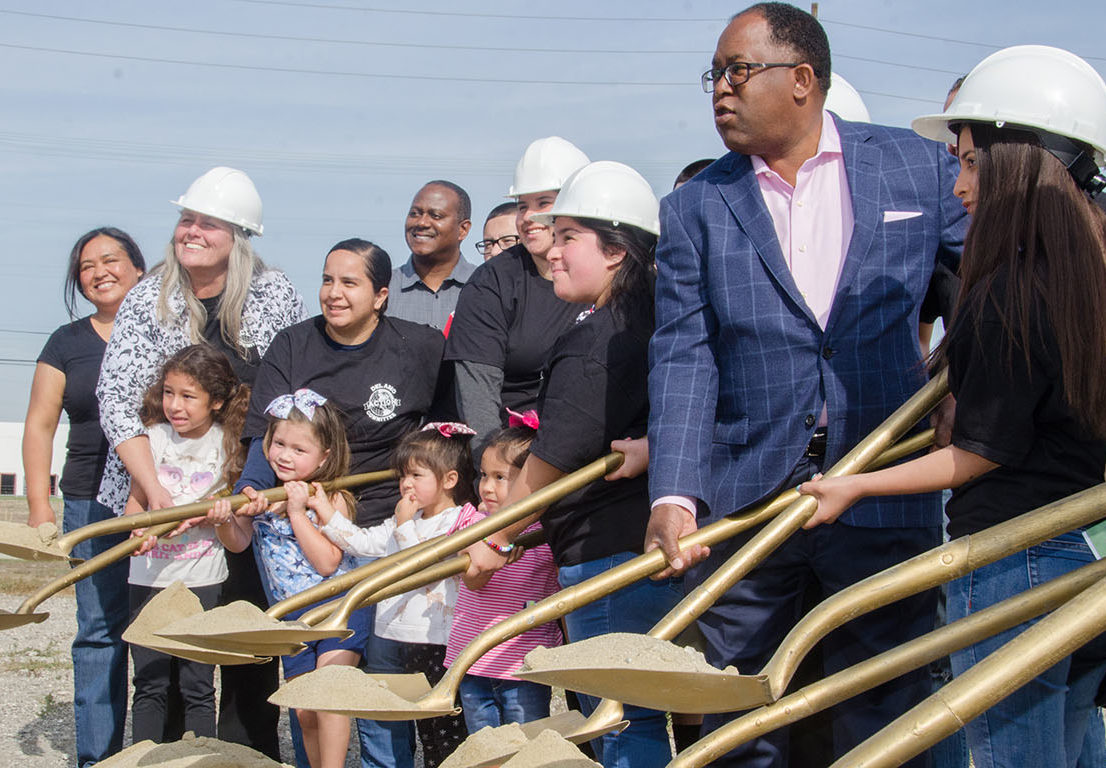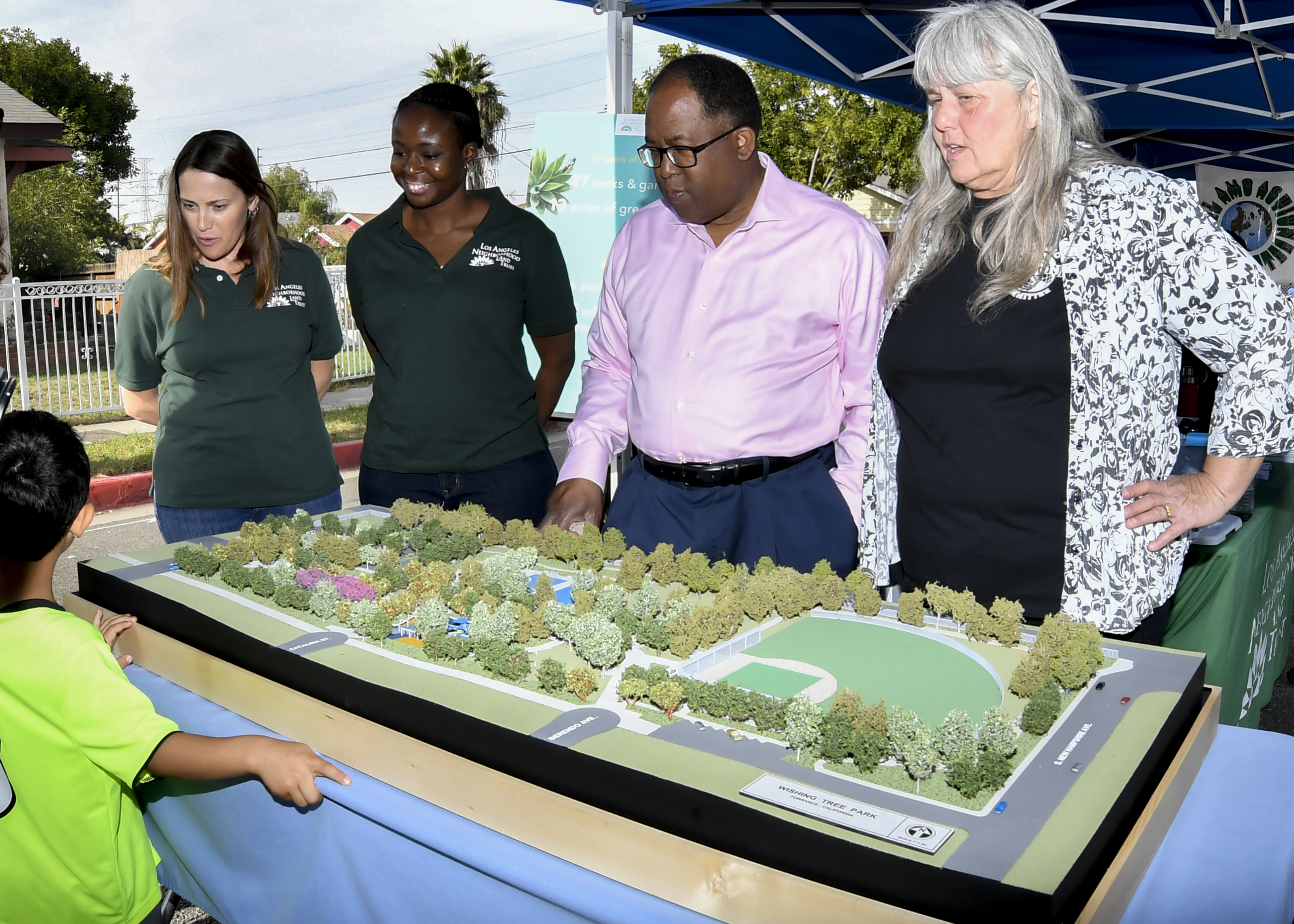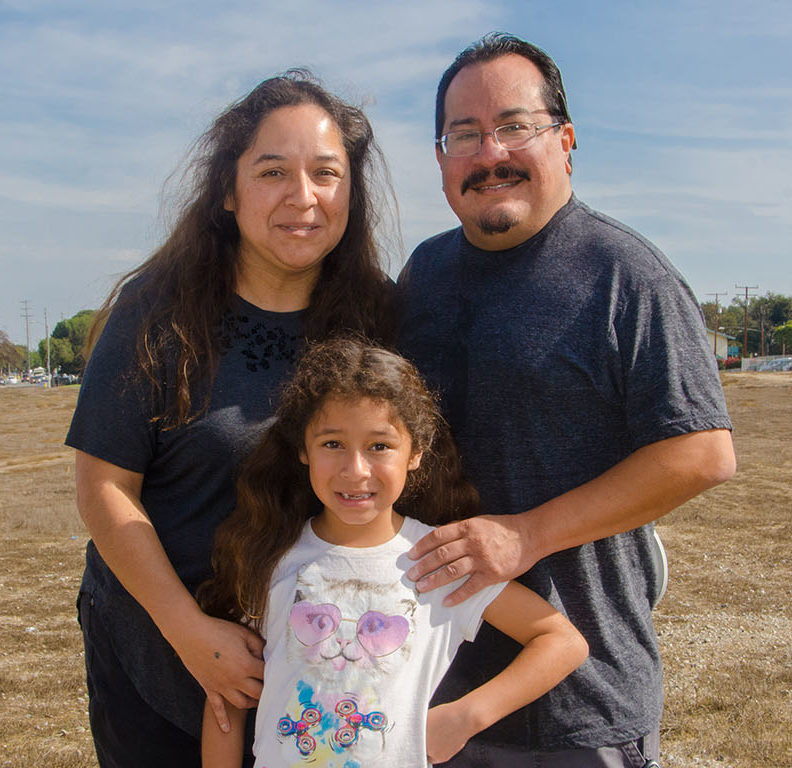
California State University, Dominguez Hills (CSUDH) faculty and students who have been active in plans to turn a long-contaminated parcel of land in unincorporated Los Angeles County into a neighborhood park are celebrating.
In November, Margaret Manning, lecturer in the Negotiation, Conflict Resolution and Peacebuilding Program, joined CSUDH students, local residents, neighborhood activists, and industry and civic leaders for a groundbreaking ceremony for Wishing Tree Park. The park will be built on land that for more than two decades has been under environmental supervision as an Environmental Protection Agency (EPA) Superfund Site.
“Over here on the north side there were open pits where benzene by-products of synthetic rubber were dumped for the U.S. World War II effort. “It just seeped into the ground. On that side of the future park is where people were living on top of the worst of it–DDT contamination,” shared Manning. “This is one of the worst superfund sites in the United States.”

In 2013, as a new resident of the neighborhood, Manning joined the ongoing community effort to have 8.5-acres of the Del Amo Superfund Site at Del Amo Boulevard near Vermont Avenue turned into the area’s first park.
Single-family homes once lined the land, but were demolished in 2001 due to vapors coming from the noxious chemicals. The land will continue to be monitored by the EPA. The former owners, Shell Oil, transferred the land in 2016 to the non-profit Los Angeles Neighborhood Land Trust for development as a park.
From 1943 to 1972 synthetic rubber was produced at the Del Amo Superfund Site, first for the United States government during World War II and later for the Shell Oil Company. The operations contaminated soil and groundwater with hazardous chemicals. Most of the area has already been redeveloped as an industrial park.
Manning saw the potential as a service learning project for students, and in early 2018, worked with the Del Amo Action Committee (DAAC), which spearheaded the grassroots campaign, to create internships for CSUDH students. The interns’ primary function is to help DAAC carry out its mission of providing information and updates for the community, comprised mostly of multi-generational Hispanic, working class residents.
A computer science student at CSUDH, provided updates for the DAAC website, while earth sciences and communication students participated in joint meetings with DAAC staff and the Los Angeles Neighborhood Land Trust, the nonprofit that is building the park using state grants and voter-approved funding. They also went door-to-door to nearly 450 homes to interview and survey residents on future land use in the area.

“We were providing information about the chemicals that were in the land and what’s happening in their community, most of it was focused on the park that will be built,” said Anthony Do, a communications major at CSUDH who attended the groundbreaking to take photos and celebrate with the community he got to know. “I really got into it and was working weekdays and the weekends. The neighborhood was relatively well informed. They have been going through this for 20 years.”
The $10 million park project is scheduled to begin in early 2019 and be completed in spring 2020. When completed, 233 new trees will line Wishing Tree Park’s active amenities, which will include a baseball field, exercise equipment, basketball and futsal (a variation on soccer) courts, and a half-mile of walking trails.
The groundbreaking ceremony began with a Native American Indian song and a blessing from Raul Garcia of “Changing Spirits.” Los Angeles County Supervisor Mark Ridley-Thomas provided remarks and led the symbolic dirt shoveling during the groundbreaking ceremony. Representatives from DAAC, Shell Oil U.S., LA County Parks and Recreation, and the Los Angeles Neighborhood Land Trust also spoke.
“We waited long enough. A lot of good and dedicated people came together and said we will not rest until we transform this lot into a place where wishes can come true, and indeed they are on their way to coming true. We have the Del Amo Action Committee to thank for that,” said Ridley-Thomas. “This project optimizes both the challenges and the opportunities of place making in a highly urban environment.”
When the park nears completion, CSUDH students will begin meeting with LA County Parks and Recreation employees who will manage the park for 30 years. There may also be opportunities for students to provide after-school youth activities and work with residents in other ways, according to Manning. “I could see occupational therapy and health sciences students meeting seniors or unemployed residents for life coaching and health services,” she said.
“There is a lot that Toros can learn here. The meetings I attended taught me about the conflicts that can arise in an endeavor like this, and I learned so much about communicating with the residents–with the public,” said Do. “It takes a lot of work; communication is key. Residents are always hungry for information. Many of them have been here for generations.”

CSUDH alumna Lisa Villarreal, who graduated in 1990 with her bachelor’s in Business Administration, became apprehensive during the long and frustrating wait for the park. She recalls rifling through her father’s papers 20 years ago after he passed away and finding the original petition to clean up the contaminated site.
“My family has been living here for 45 years–my mother and sister still live down the street. There has been a lot of talk for a long time about cleaning up the land. They even considered building a sheriff substation at one time, but nothing came of it,” said Villarreal. “I’m glad they plan to finally build a park, but I’ll feel better when I start seeing some real digging. We have our fingers crossed.”
Villarreal’s young daughter, Hannah, is a bit more optimistic.
“I’m excited about the park. I want to play on the baseball field,” she said. “I can’t wait because right now we have to drive miles away to go to a park.”